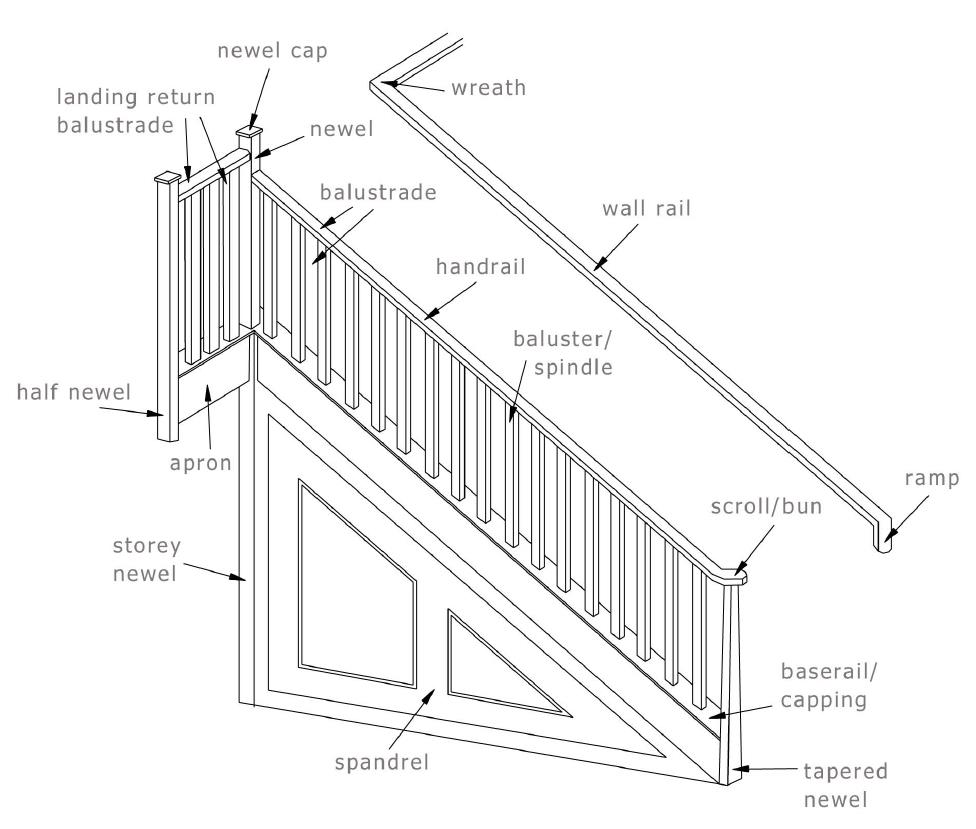The humble staircase can open up a wealth of terminology that can cause confusion.
The diagram below highlights the core components of a staircase .
.
Key components
Strings: A span of timber to which treads and risers are attached to support a flight or run of stairs
Tread: The horizontal part of the stair that is stepped on.
Risers: The vertical part of the stair (where no risers are present this would be referred to as “open risers”). The number of steps in a staircase is counted by the number of risers, not the number of treads.
Balustrade: A row of balusters (spindles) topped by a handrail serving as a safety guarding and along the edge of a staircase.
Handrail: Following the staircase to support and guide during ascending or descending a staircase and an element to grasp in case of a fall
Newel: A large baluster or post acting as a structural element to anchor the balustrade to the floor or stair.
Spandrel: The triangular space underneath a staircase (when there is not another flight underneath).
Winder: A stair that is narrower on one side to enable a turn in the staircase. A series of winders form a circular or spiral stairway. When three steps are used to turn a 90° corner, the middle step is called a kite winder as a kite-shaped quadrilateral.
Apron: A facia covering the ends of rough strings, carriage pieces, and the joists of landings.
Other key terms:
Flight: An uninterrupted series of steps.
Rise: The height of an individual step (i.e. this differes from the hight of a riser as it refers to the height that must be stepped)
Going: The depth of an individual step
Pitch: The slope of the staircase measured as the ratio between the rise and going
Walkline: The path that an individual would follow up or down a staircase
For information on designing timber staircases download the BWF Stair Scheme Design Guide
To find an accredited supplier of timber staircases click here
